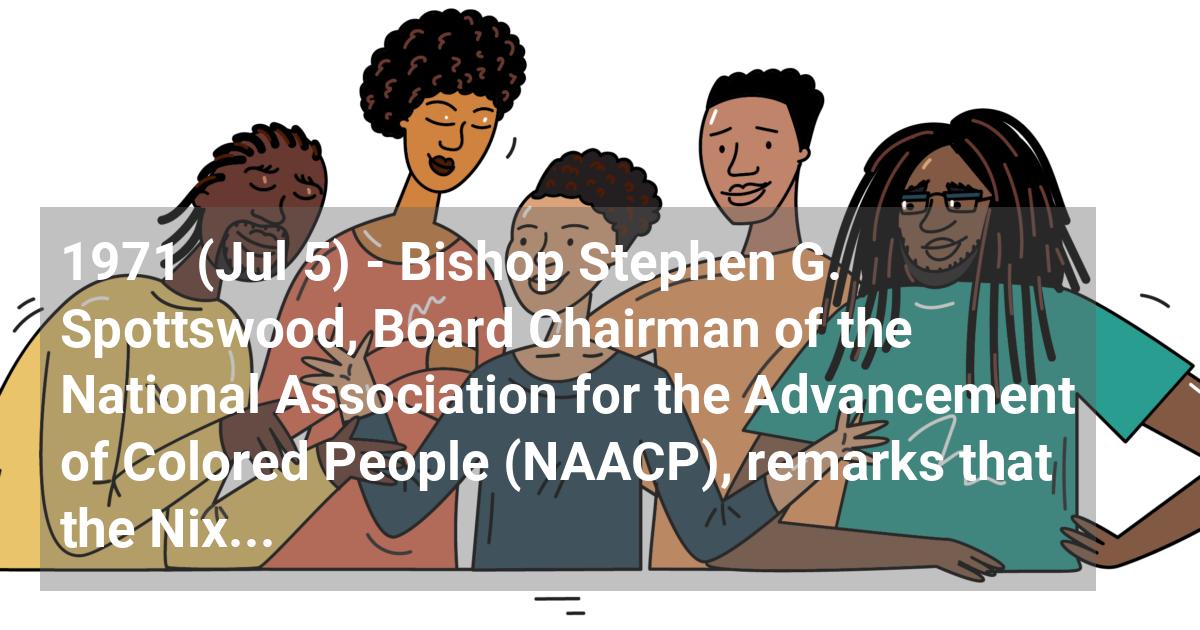Home / Full timeline / Bishop Stephen G. Spottswood, Board Chairman of the National Association for the Advancement of Colored People (NAACP), remarks that the Nixon administration had taken steps to dispel the image that it was anti-Black. Some NAACP leaders disagree.
 Bishop Stephen G. Spottswood, Board Chairman of the National Association for the Advancement of Colored People (NAACP), remarks that the Nixon administration had taken steps to dispel the image that it was anti-Black. Some NAACP leaders disagree.
Bishop Stephen G. Spottswood, Board Chairman of the National Association for the Advancement of Colored People (NAACP), remarks that the Nixon administration had taken steps to dispel the image that it was anti-Black. Some NAACP leaders disagree.
1971 (Jul 5)
Bishop Stephen G. Spottswood, Board Chairman of the NAACP, remarked during the group's 62nd annual convention in Minneapolis that the Nixon administration had taken steps during 1971 to dispel the image that it was anti-Black. Without being very specific, Spottswood said that the president had taken certain steps and announced certain policies which had “earned cautious and limited approval among Black Americans.” A year before, at the NAACP's convention, Spottswood portrayed the Nixon administration as anti-Black. Some NAACP leaders apparently disagreed with Bishop Spottswood's new assessment of the Nixon policies. NAACP Labor Director Herbert Hill characterized the administration's racial policy as criminal negligence, a posture even worse than Benign Neglect. Hill specifically accused the administration of failure to enforce laws forbidding discrimination by federal contractors which resulted, in his view, in a high unemployment rate among Blacks. Similarly, NAACP Executive Secretary Roy Wilkins told the delegates that president Nixon could increase his influence among Black voters in the 1972 elections if he made more jobs available to Black voters.
References:
- • Hornsby, Alton. Chronology of African-American History: Significant Events and People from 1619 to the Present. Detroit: Gale Research, 1995.
